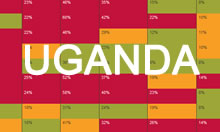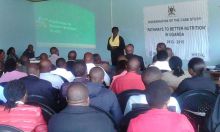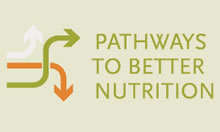"Pathways to Better Nutrition” Study
Summary of District Findings, 2013-2015
Timeline of PBN District Activities
In Lira and Kisoro districts, as with the national Pathways to Better Nutrition (PBN) study, we used qualitative, budget, and secondary survey data to ask how nutrition prioritization influences funding for nutrition.
Click on the numbers below to see a timeline of the data collection methods.
District Findings
Snapshots of Nutrition Findings
Both Lira and Kisoro have yet to reach the 2016 UNAP targets for reductions in undernutrition and breastfeeding. Lira is doing well in Objectives 1 and 4. Kisoro is doing well in Objectives 2 and 4. [See the District Snapshots for further analysis]
Qualitative Data Findings
- Kisoro and Lira districts have demonstrated their commitment to improve nutrition by establishing coordinating structures at the district and sub-county levels, though functionality is still dependent on partner support. With the orientation of the districts by the Office of the Prime Minister (OPM), districts demonstrated understanding on UNAP objectives, roles, and structure but need more training on applying the UNAP to their planning, budgeting, implementation, and monitoring of nutrition activities.
- Absence of a monitoring and evaluation system to track and share the progress of nutrition efforts with national level ministries, partners, and the UNAP secretariat makes it difficult for the district to prioritize nutrition activities.
- Political involvement in the District Nutrition Coordination Committee is limited to the chief administration officer. This hampers the ability of other local leaders to advocate for improved nutrition policy and increased funding, which blocks the inclusion of nutrition in the overall district process.
Budget Findings
- On average, 6.7 percent of the district budgets across Kisoro and Lira were allocated for nutrition activities from 2013-2015. Much of the local government funding comes from conditional grants that do not allow re-allocation for nutrition activities.
- Contrary to the common belief that nutrition activities are largely funded in the health sector, in both Lira and Kisoro districts, production provides a high proportion of nutrition funding and activities. It is important to note that the centralization of National Agriculture Advisory Services caused a decline in production funding in Lira from 2013-2015.
- Both districts are implementing activities from UNAP Objectives 1-4. From 2013-2015, funding for nutrition-specific activities (Objective 1) and institutional strengthening increased, while funding for food production (Objective 3) decreased due to the centralization of NAADS.
- In both districts, a significant amount of funding came from off-budget donor sources (about 42 percent of total nutrition funding) in 2013/14; however, the inability of donors to account for their own activities at the district level meant that very few nongovernmental organizations were able to report NGO contribution for 2014/15.
- There is no designated budget line for nutrition in the districts.
Selection of Findings from District Budget Data Analysis
Figure 1. Composition of Central Government Conditional Grants to Lira and Kisoro Districts, FY 2014/15
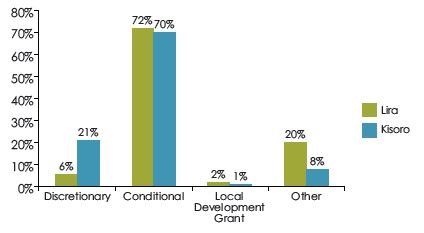
Figure 2. Lira District Total Nutrition Budget, FY 2014/15
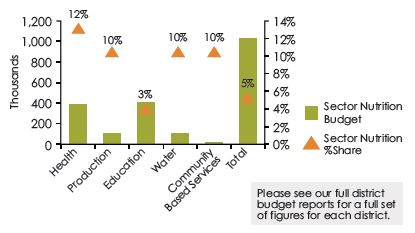
Figure 3. Sector Funding for UNAP Objectives in Kisoro, FY 2014/15
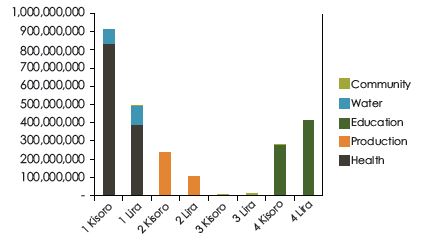
Conclusions
Nutrition coordination committees are well aware of the UNAP’s structures and goals, but need support to put the plan into action. In addition, pre-existing planning and funding mechanisms isolate the committees and make it difficult for local government to mainstream nutrition into their work plans and budgets. District funding seems most robust for Objectives 1 (MICYN) and 4 (Nutrition Systems), but further funding and planning support could be given to nutrition-sensitive activities related to Objectives 2 (Diverse Diets) and 3 (Social Protection). This is particularly true for Lira, which performs below the national average on Objective 2.
Recommendations
- Government and partners should provide additional technical support to district nutrition coordination committees on how to integrate UNAP objectives during planning, budgeting, implementation and monitoring of departmental and district work plans.
- Government stakeholders should consider establishing dedicated funding lines for nutrition, particularly for coordination and other non-project needs, and/or provide some unconditional grants for LGs to use for this purpose.
- Government should establish a monitoring and evaluation framework for UNAP activities, with a clear plan for indicators and targets that follows best practices for data use and access at both district and central levels. Measuring lower-level progress will help assess impact, gain buy-in from local officials, and increase donor financing.
